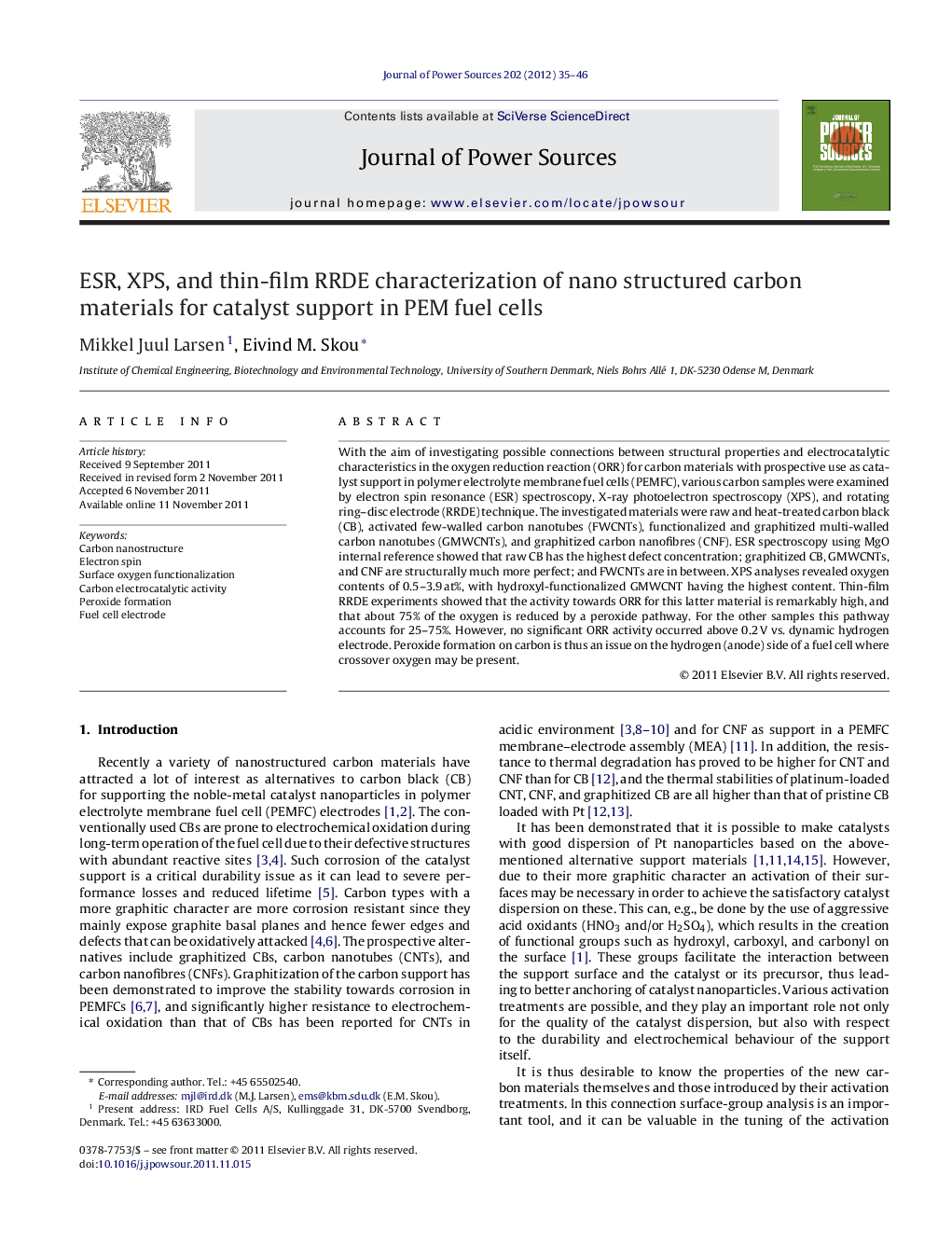| Article ID | Journal | Published Year | Pages | File Type |
|---|---|---|---|---|
| 1288538 | Journal of Power Sources | 2012 | 12 Pages |
With the aim of investigating possible connections between structural properties and electrocatalytic characteristics in the oxygen reduction reaction (ORR) for carbon materials with prospective use as catalyst support in polymer electrolyte membrane fuel cells (PEMFC), various carbon samples were examined by electron spin resonance (ESR) spectroscopy, X-ray photoelectron spectroscopy (XPS), and rotating ring–disc electrode (RRDE) technique. The investigated materials were raw and heat-treated carbon black (CB), activated few-walled carbon nanotubes (FWCNTs), functionalized and graphitized multi-walled carbon nanotubes (GMWCNTs), and graphitized carbon nanofibres (CNF). ESR spectroscopy using MgO internal reference showed that raw CB has the highest defect concentration; graphitized CB, GMWCNTs, and CNF are structurally much more perfect; and FWCNTs are in between. XPS analyses revealed oxygen contents of 0.5–3.9 at%, with hydroxyl-functionalized GMWCNT having the highest content. Thin-film RRDE experiments showed that the activity towards ORR for this latter material is remarkably high, and that about 75% of the oxygen is reduced by a peroxide pathway. For the other samples this pathway accounts for 25–75%. However, no significant ORR activity occurred above 0.2 V vs. dynamic hydrogen electrode. Peroxide formation on carbon is thus an issue on the hydrogen (anode) side of a fuel cell where crossover oxygen may be present.
► Investigation of electron-spin characteristics and surface oxygen in carbons. ► Effects of structure and surface on electrocatalytic behaviour. ► Defects and surface oxygen groups—particularly hydroxyl—promote oxygen reduction. ► Hydroxyl groups promote the generation of peroxide. ► Oxidative pre-treatments affect spin activity, ORR activity and peroxide generation.
